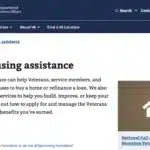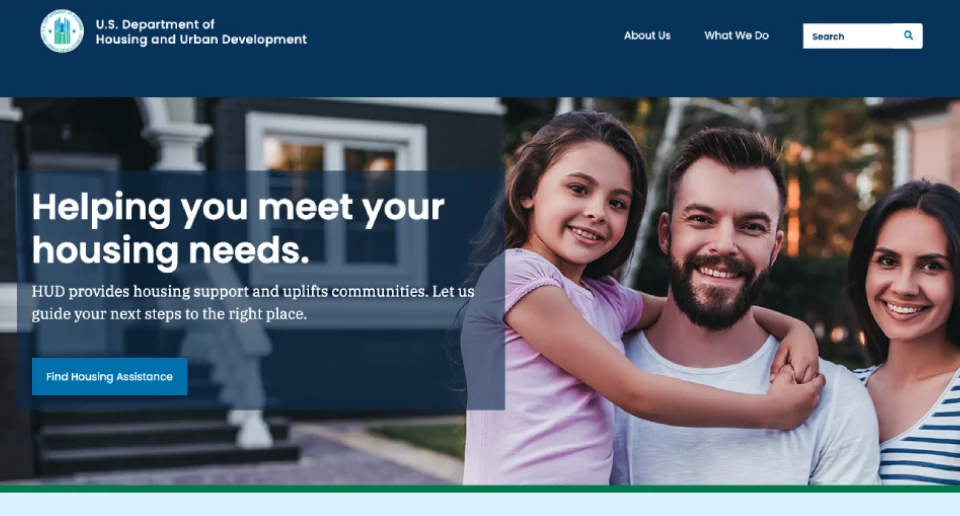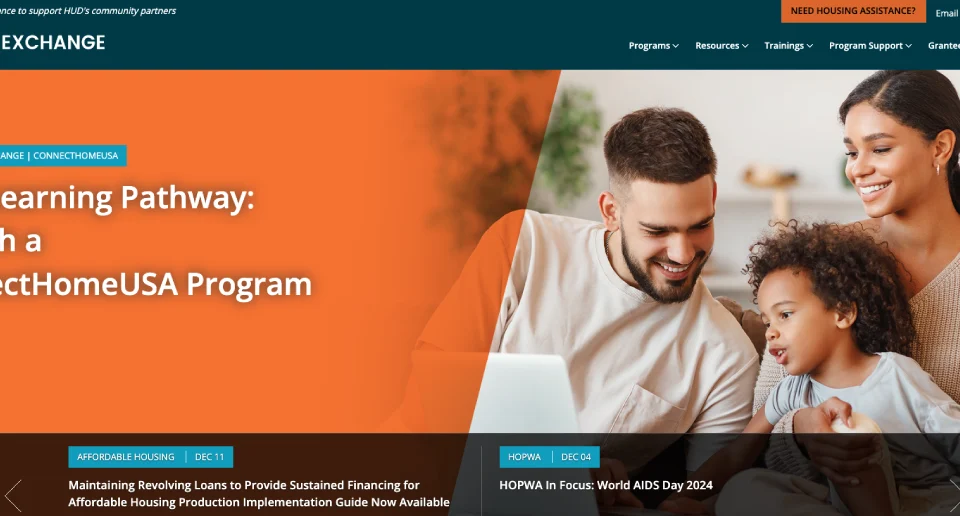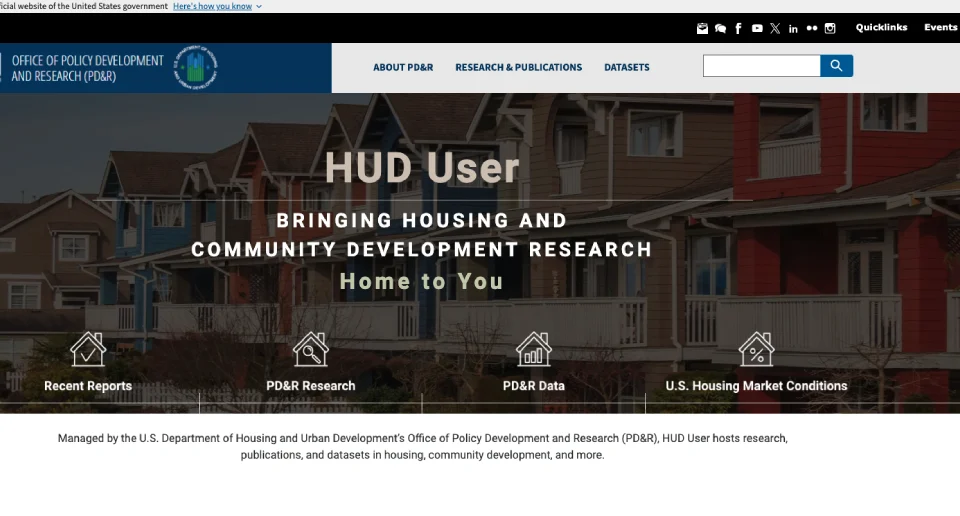Trusted Resource: Veterans Affairs (VA) Housing Assistance
RD.USDA.Gov
ThFor many families in rural communities, finding affordable and safe housing can be a challenge. The USDA Rural Development Single Family Housing Programs provide a lifeline, offering financial assistance and loan options to help low-income individuals and families achieve the dream of homeownership or secure essential home repairs. These programs aim to strengthen rural communities by improving access to affordable housing and fostering economic stability.
What Are USDA Single Family Housing Programs?
The USDA Rural Development Single Family Housing Programs are part of the U.S. Department of Agriculture’s efforts to support rural communities. These programs focus on providing low-income individuals and families with the resources needed to buy, build, repair, or improve single-family homes in eligible rural areas.
Administered by USDA Rural Development, the initiative includes a range of programs designed to make homeownership affordable, improve living conditions, and support sustainable community growth. With flexible terms, competitive interest rates, and targeted assistance for low-income households, these programs have been instrumental in helping families achieve housing stability.
How USDA Single Family Housing Programs Work
1. Direct Home Loans (Section 502)
The Single Family Housing Direct Home Loan Program provides loans to low- and very-low-income individuals who cannot obtain credit elsewhere. These loans can be used for:
- Purchasing new or existing homes.
- Building a home from scratch.
- Renovating or repairing an existing property.
Key features of the Direct Loan program include:
- Subsidized Interest Rates: Designed to reduce monthly payments based on household income.
- Eligibility Criteria: Applicants must meet income limits and be unable to secure traditional financing.
- Location Requirements: Properties must be located in eligible rural areas as defined by USDA guidelines.
This program ensures that homeownership becomes accessible to families who otherwise may not have the opportunity.
2. Guaranteed Home Loans
The Single Family Housing Guaranteed Loan Program assists moderate-income families by providing loan guarantees to approved lenders. With this program, borrowers can access affordable loans without needing a down payment. The USDA guarantees the loan, reducing the risk for lenders and making it easier for families to qualify.
Key benefits of the Guaranteed Loan program:
- No Down Payment Required: Borrowers can finance up to 100% of the home’s cost.
- Flexible Credit Requirements: Designed for those who may not meet traditional credit standards.
- Broad Usage: Loans can be used to purchase, build, or renovate homes in eligible rural areas.
3. Home Repair Loans and Grants (Section 504)
The Single Family Housing Repair Loans and Grants Program helps very-low-income homeowners improve, repair, or modernize their homes. This program is especially beneficial for elderly homeowners who need modifications for safety and accessibility.
Key details include:
- Loans: Up to $40,000 for home repairs, with low-interest rates.
- Grants: Up to $10,000 for seniors aged 62 or older to remove health and safety hazards.
- Combined Loans and Grants: Up to $50,000 for eligible applicants.
These funds can be used for essential repairs, such as fixing a roof, upgrading heating systems, or installing ramps and other accessibility features.
4. Mutual Self-Help Housing
The Mutual Self-Help Housing Program is a unique initiative that allows low-income families to work together to build their homes. Under this program:
- Groups of families collaborate to construct homes under professional supervision.
- Labor costs are significantly reduced, making homes more affordable.
- Participants gain valuable skills and a sense of ownership through their contributions.
This program promotes community engagement and empowers families to achieve homeownership through collective effort.
5. Rural Housing Site Loans
The Rural Housing Site Loan Program provides financing for the purchase and development of land for affordable housing. These loans can be used by nonprofits or public bodies to prepare sites for low- and moderate-income families.
Eligible activities include:
- Purchasing land.
- Installing infrastructure, such as water and sewer systems.
- Preparing sites for housing construction.
This program ensures that affordable housing projects have the necessary foundation for success.
Eligibility Requirements for USDA Single Family Housing Programs
To qualify for these programs, applicants must meet specific criteria, including:
- Income Limits: Eligibility is based on adjusted household income, which must fall within the USDA’s defined limits for the program.
- Residency: Applicants must plan to occupy the property as their primary residence.
- Location: Homes must be in designated rural areas. The USDA website offers a property eligibility map to verify location.
- Creditworthiness: While credit requirements are flexible, applicants must demonstrate the ability to repay the loan.
Specific requirements may vary by program, so it’s essential to review the guidelines for each option.
How to Apply for USDA Single Family Housing Programs
Applying for USDA housing assistance is straightforward:
- Determine Eligibility: Visit the USDA Eligibility Site to check income and property qualifications.
- Choose the Right Program: Identify which program best suits your needs—Direct Loans, Guaranteed Loans, or Repair Loans and Grants.
- Prepare Documentation: Gather necessary documents, including proof of income, credit history, and property details.
- Contact USDA or Lender: For Direct Loans and Repair Programs, contact your local USDA Rural Development office. For Guaranteed Loans, work with an approved lender.
- Complete the Application: Submit the required forms and documentation for processing.
The USDA provides resources and guidance to help applicants navigate the process with ease.
Why USDA Single Family Housing Programs Matter
Rural communities play a vital role in the social and economic fabric of the United States. However, many of these areas face challenges such as poverty, limited housing options, and aging infrastructure. The USDA’s housing programs address these challenges by:
- Promoting Homeownership: Creating opportunities for families to own safe and affordable homes.
- Improving Living Conditions: Ensuring that low-income households can access necessary repairs and upgrades.
- Fostering Economic Stability: Supporting sustainable community growth through housing development.
These programs are not just about providing homes—they’re about building stronger, more resilient communities.
Government Support Behind USDA Housing Programs
USDA Rural Development is part of the U.S. Department of Agriculture, which oversees a broad range of programs aimed at improving rural life. The Single Family Housing Programs receive federal funding and operate under the following branches:
- Rural Housing Service (RHS): Manages the housing programs, ensuring they meet the needs of rural residents.
- Federal Partnerships: Collaborates with state and local governments, nonprofits, and lenders to expand access to affordable housing.
- Legislative Backing: Programs are authorized under laws like the Housing Act of 1949, which establishes the USDA’s role in rural housing.
This robust framework ensures that the programs are well-funded, transparent, and impactful.
Additional Benefits of USDA Housing Programs
Beyond providing housing assistance, these programs offer several long-term benefits:
- Economic Growth: By increasing homeownership, communities experience growth in local economies and tax bases.
- Energy Efficiency: Many loans and grants support energy-efficient upgrades, reducing utility costs for homeowners.
- Community Development: Programs like Mutual Self-Help Housing strengthen social bonds and foster a spirit of collaboration.
The USDA’s commitment to rural development extends beyond housing, ensuring that communities have the resources they need to thrive.
Conclusion
The USDA Rural Development Single Family Housing Programs are a lifeline for low- and moderate-income families in rural America. By offering accessible loans, grants, and support services, these programs help individuals achieve safe and affordable housing while fostering community development.
Whether you’re looking to buy your first home, make essential repairs, or build a new house, the USDA’s programs provide a pathway to stability and growth. Explore the USDA Rural Development website to learn more and take the first step toward improving your housing situation today.





